Civia App is a rogue application with the ability to display aggressive pop-ups, some of which could be misleading, distressing, or redirect to online scams.
This app is very similar to RoxiApp, NoqotApp, and other similar forms of adware I’ve encountered in the past, so I have a pretty good idea of how to remove it.
Just follow the steps I’ve given you below and you’ll be able to manually remove this rogue software from your PC.
Civia App Removal Instructions
Let’s start with the conventional way to remove software you no longer want on your PC. This might work if you are lucky, in which case you won’t have to spend significantly more of your time with the full removal guide below.
- Open the Start Menu. Type “Apps & Features” and click the first icon.
- Sort the applications by installation date and scan the list for new or unfamiliar programs added around the time Civia App appeared. Obviously, also look for Civia App itself in the list.
- Select Civia App or any other suspicious program you might find and click “Uninstall”
- Follow the uninstaller prompts to attempt removal. In some cases, the process will proceed without interruption and the rogue program will be gone at the end.
- If you know the directories where the app(s) you just removed used to be located, go there and delete any remaining files or folders.
Obviously, most unwanted software doesn’t go away that easily. You might get lucky with Civia App, so restart your PC and see if it’s gone. But in case it’s still there, don’t worry about it – the actual removal is only just beginning.
Video walkthrough for this step:
SUMMARY:
Important! Read Before Continuing
The full Civia App manual removal process that I am about to show you now will likely take you anywhere between 30 and 60 minutes to complete. It also requires you to have at least some basic experience and technical knowledge or you might find some of the steps confusing or challenging.
In case you don’t have the confidence to perform the manual removal, I suggest you try deleting the malware automatically, with the help of a professional removal tool. One such tool that I recommend is SpyHunter 5. It has saved me many times from stubborn malware and it can help you too when dealing with Civia App. You’ll find SpyHunter 5 linked on the current page.
How to Get Rid of Civia App: Advanced Steps
Civia App is an adware – it makes money through the ads, pop-ups, and notifications it spams you with, so it makes sense for its creators to make its removal difficult. The longer it stays on your system, the more money it makes.
However, if you know its tricks and the places it hides its settings and data, you can definitely remove it on your own. There’s only one third-party tool you’ll need to perform the next steps, but it’s totally free and doesn’t require any sort of registration.
That tool is called LockHunter. It’s a file-unlocking utility that’s essential to deleting certain stubborn files that you’ll likely come across.
Download and install LockHunter before moving forward or you might not be able to perform some of the next steps.
How to Delete Persistent Files with Lock Hunter
One more preparatory step before moving on to the actual removal steps: some of the malware files might be hidden, so you must make them visible:
In the Start Menu, type “Folder Options”. Then, in the View section, choose “Show hidden files, folders, and drives” to make hidden items visible. Then click Apply and then OK.
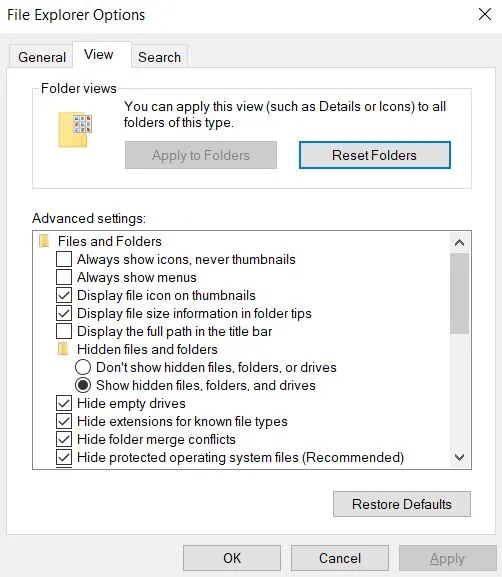
Video walkthrough for this step:
Time to hunt down and delete malware data.
Delete Civia App Virus Files
There are several locations in your system where you are likely to find Civia App files and folders. You must go to each of them and delete anything that looks linked to the malware.
The first location you must navigate to is C:\Users\YourUsername\AppData\Roaming.
There, you should find a folder labeled Trix Winqz Ro and in it should be the Civia App folder. You must delete both.
Look for a folder named Civia App or something similar. Also, look for folders with weird names that you don’t recognize.
If you spot a questionable folder that seems potentially linked to the adware, delete it.
Here, it’s possible that you come across an obstacle: you might be blocked from deleting the Civia App folder because some of the files in it are currently in use by another program. This is why you need LockHunter.
If LockHunter is already installed on your PC, just right-click the stubborn folder and then select the new “What is locking this folder?” option in the context menu.
On the window that opens, you’ll see the “Delete it!” option – click it, and the folder will be unlocked and deleted.
Video walkthrough for this step:
Next, pay a visit to the Program Files and Progam Files (x86) folders in your C: drive. They might also contain a folder linked to Civia App, so carefully look through them and if you find anything sketchy, delete it.
Next, go to this directory:
C:\Users\*Your Username*\AppData\Local\Temp
Once there, press Ctrl + A to select all of the folder’s contents, and then press Del to delete them. These are all temporary files and folders, so it’s ok to delete them. It’s actually recommended that you do that from time to time to get rid of unnecessary clutter.

Two other locations worth checking for rogue data are:
- C:\ProgramData\Microsoft\Windows\Start Menu\Programs\Startup
- C:\Users\YourUsername\AppData\Roaming\Microsoft\Windows\Start Menu\Programs\Startup
After you’ve gone through them and deleted anything suspicious you might have found there, proceed to the next section of the guide.
Remove Civia App Malware Tasks in the Task Scheduler
Adware apps like Civia App often create scheduled tasks to reinstall themselves, which undermines earlier deletion efforts. It’s, therefore, crucial to perform this step if you don’t want the malware to return eventually.
Open Task Scheduler through the Start Menu (search for it there).
Open Task Scheduler Library, examine each task by double-clicking it and selecting the “Actions” tab.
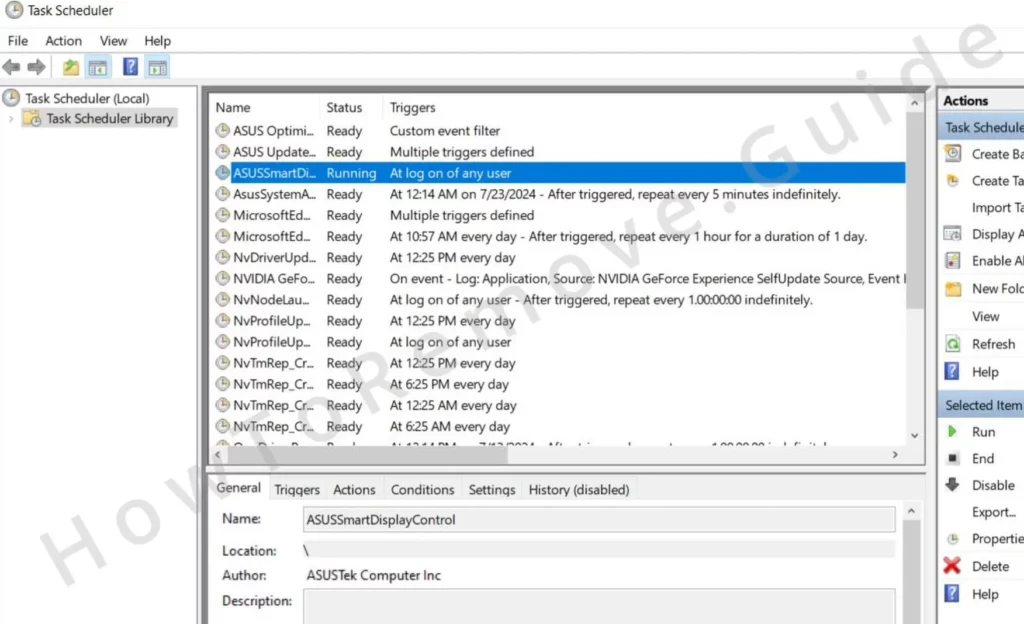
Pay attention to what software or script the task is set to perform. If you see anything that runs from AppData or Roaming, an unfamiliar .exe file, or a suspicious script, delete the respective task.
Video walkthrough for this step:
Make sure to go through all tasks in the Task Manager. There shouldn’t be that many, so it’s worth checking each one individually.
How to Delete Malware Processes From the Task Manager
How to Remove Civia App Registry Keys
The Windows Registry stores settings for all software on your PC, including malware that’s currently in the system, so it’s crucial to clear it from any rogue entries:
Open the Registry Editor. Search for “regedit” in the Start Menu, right-click, and select “Run as Administrator”.
Press Ctrl + F within the Registry Editor and type “Civia App”.
Start the search and delete what gets found. After each removal, redo the search to ensure all entries related to Civia App are gone.
After all Civia App items are removed, run a new search: this time type the name of any other questionable apps that you attempted to uninstall in the Apps & Features section at the beginning of this guide.
Next, manually navigate to these registry keys in the left panel:
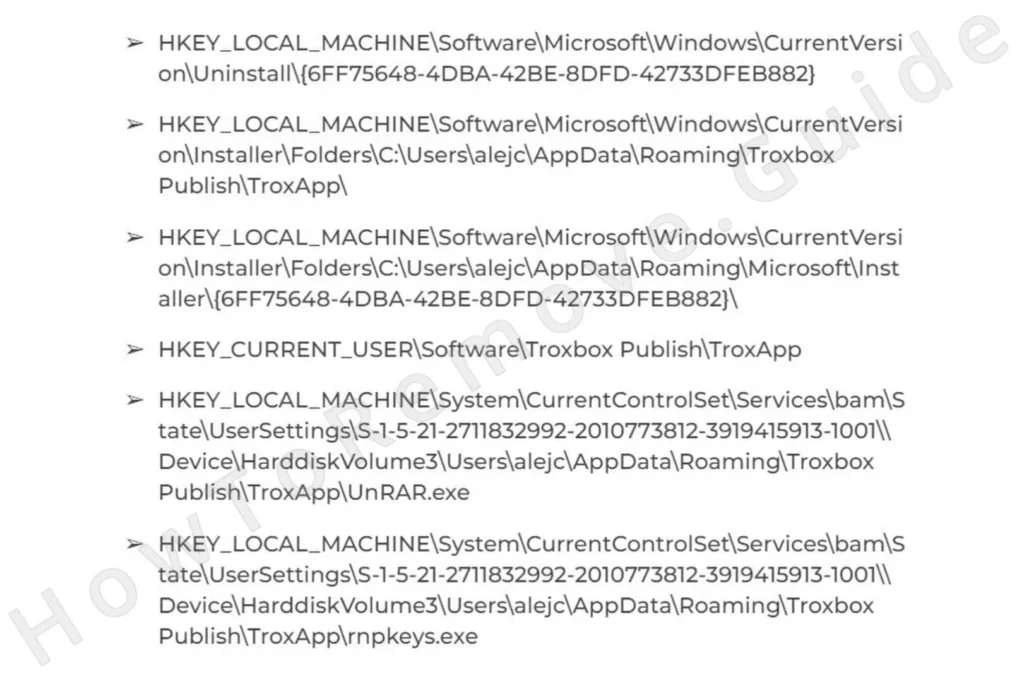
Once you get to each of them, check their values in the right panel. If any value seems linked to Civia App, delete it, but do not remove the actual key that contains it. Delete only the value.
After you’ve checked and cleaned each of these keys, you can move on to the next section.
Video walkthrough for this step:
Get Rid of Civia App Malware Policies
Adware apps can and often do target the browser, making unwanted changes in it, similar to how browser hijackers behave. The changes could include the installation of rogue extensions, the replacement of the browser’s default search engine with some rogue ones, and more.
Such changes are often enforced by a custom third-party policy added to the browser. Evidence of the presence of such policies is the “Managed by your organization” message within the browser settings and its menu.
If you find out that the adware has added its own policy to your browser, use the Group Policy Editor to remove it.
Search for it and open it through the Start Menu. Navigate to Computer Configuration > Administrative Templates, right-click the latter, and select the Add/Remove option.
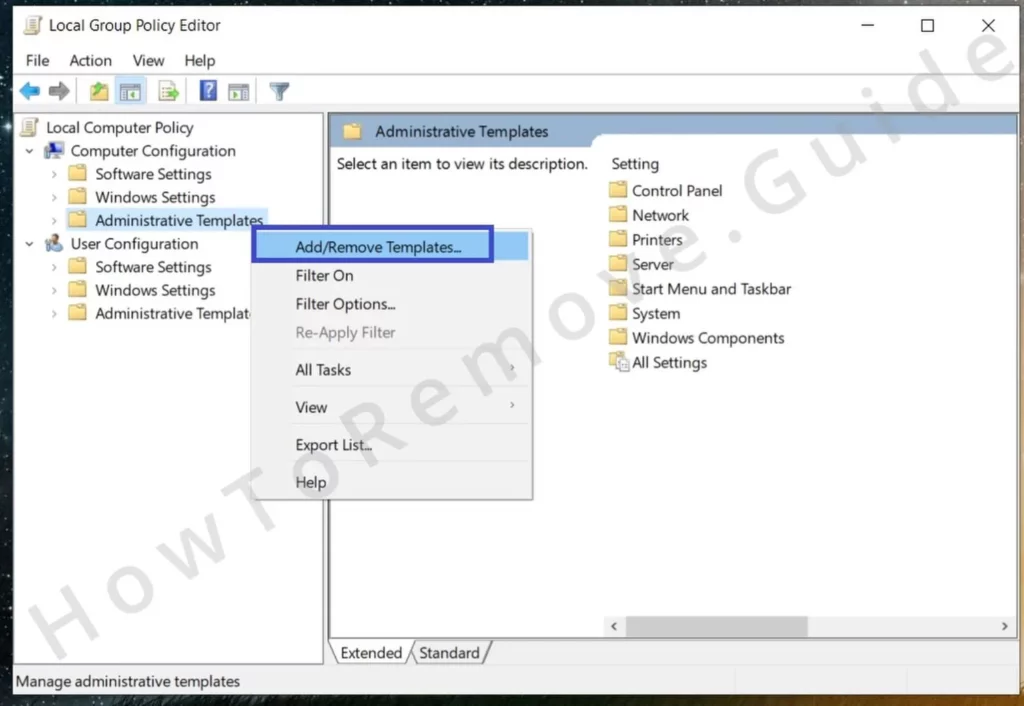
Then delete everything in the list that shows up. This should get rid of all policies currently active in your browser.
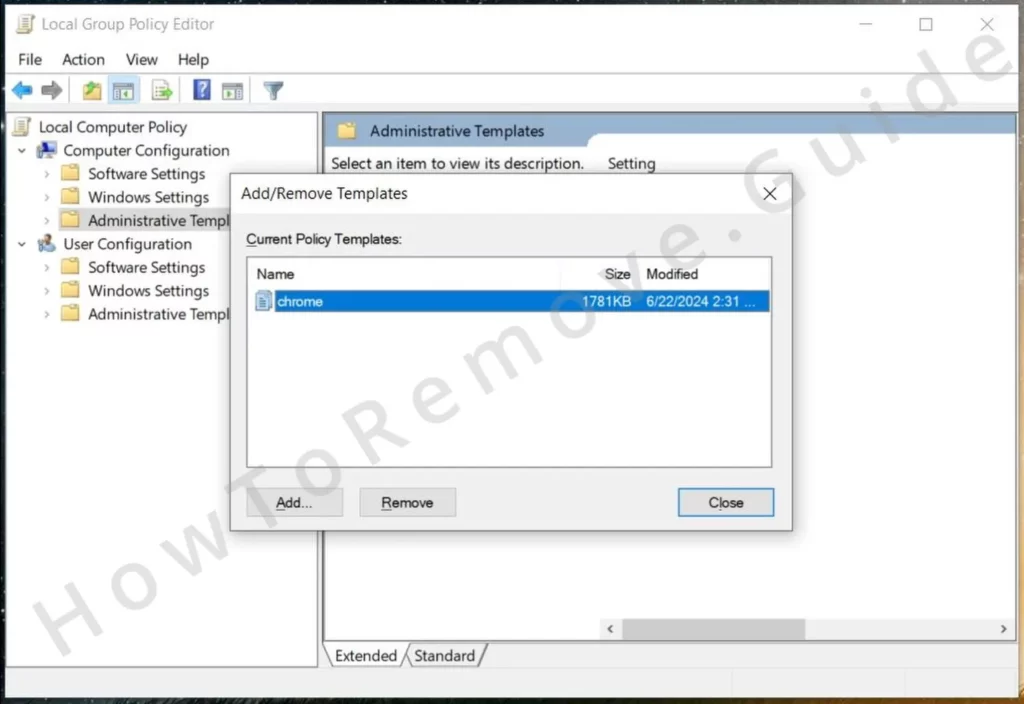
There’s an even quicker option for Chrome users: Download the Chrome Policy Remover. The tool is totally free and it clears all Chrome-specific policies that control your browsing preferences.
Download it from the provided link, run it as Administrator, and if you get a Windows warning, select “More Info” > “Run Anyway”; the tool’s trusted and widely used, so no need to worry.
Once it opens, it runs a quick script that gets rid of all Chrome policies.
Video walkthrough for this step:
Manual Group Policy Removal
Automatic Group Policy Removal
How to Uninstall Civia App From Your Browser
If Civia App has added a rogue policy to the browser, it has likely made some changes that you need to reverse, which you can now easily do since the policy has been dealt with:
Open the browser’s settings and navigate to Settings > Extensions. Any extension that seems unfamiliar or linked to the malware should go.
In Privacy and Security, choose “Clear browsing data”.
Delete cookies, cache, download history, browsing history, and all other types of data you see in the Advanced tab. Leave only your passwords intact. Also, make sure to choose a date range extending to before Civia App appeared on the system.
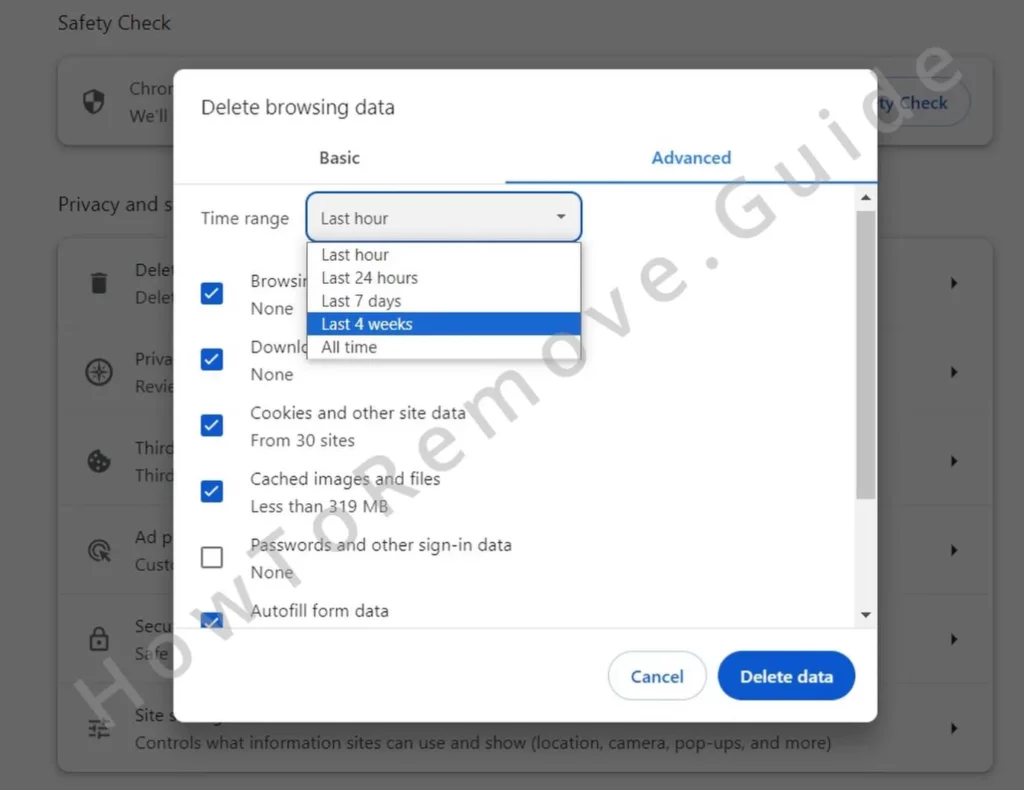
Next, go to Site Settings and review the various types of file permissions.
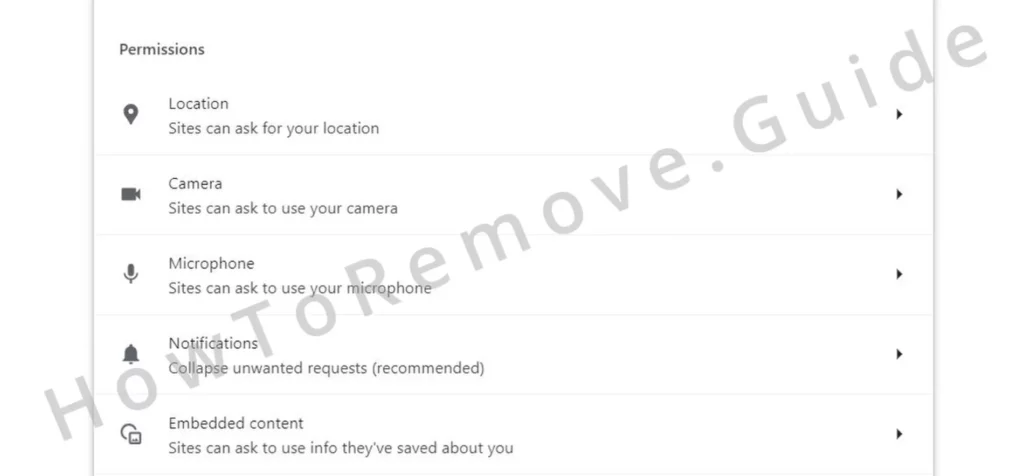
Unfamiliar URLs, especially those added without user input, often signal malware interference. Remove any URLs under “Allow” that seem suspicious.
Verify the Search Engine settings to ensure only trusted engines like Google or Bing appear.

Video walkthrough for this step:
Chrome
Microsoft Edge
Mozilla Firefox
Choose a reputable search provider as your browser’s default and then check the Manage Search Engines section to see if there are any rogue entries that you need to delete.
Lastly, check On Startup and Appearance for any unauthorized URLs or themes. Civia App tends to embed itself into these settings, so you need to clear these settings too.
After cleaning up your browser, I am pretty confident that Civia App should be fully gone from your system. If you do still notice any signs of its presence on your PC or in the browser, I recommend trying out the SpyHunter removal tool, which will let you delete any malware remnants in just a couple of clicks.

Leave a Reply